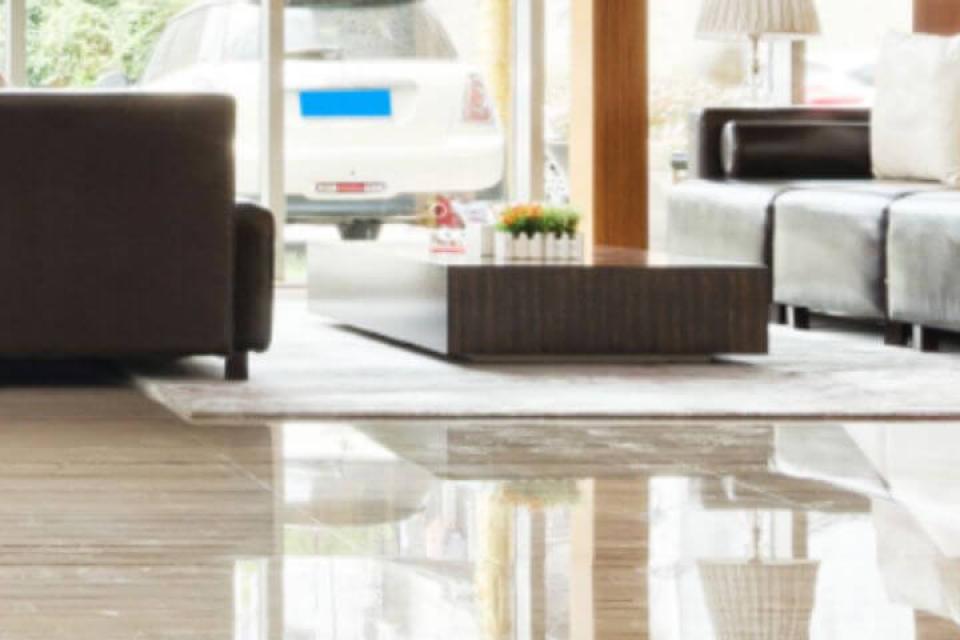There are many articles and pamphlets about the joys and pitfalls of moving to a new country and experiencing life in a new culture.
There's a lot to adjust to – the weather, language, food, etc. A lot of expats may also experience being a tenant in a rented property and having to work with real estate agents and/or landlords. It may have been a long time since they last experienced this.
As Sir Grout Singapore, and a specialist in hard flooring restoration, we get a lot of requests from foreigners who live here. They have scratched, stained, and dulled their marble floors. They believe that they either 'didn't do anything wrong' or that they used the wrong product on the floor, and it left a big mark.
They'll say:
"Why would you put marble in your bathroom?"
"We don't use marble back home, we use hardwood, tile, or carpet."
"I just want to get my deposit back without the landlord inflating the price of the marble polishing!"
All of these concerns are valid, but there's no getting around the marble flooring in your home. All you can do is prevent the inevitable conflict. If you have scratches on your marble flooring and your move-out date is arriving, the best thing you can do is spend a fraction of your security deposit getting it fixed before the landlord comes to inspect the apartment. It may seem like your damage deposit should be given back to you if there is wear and tear only, but you have to remember that when there is even a little damage, the landlord views the damage deposit as the renovation fund.
So what can you do to ensure that you get your damage deposit back?
If you're lucky enough to read this when you're just moving in, there are some important tips for your situation. When it comes to your marble or natural stone floors you should definitely prepare for the inevitable security deposit struggle.
Pre Move-in
- Make sure that it's not in the contract that you have polish the floors before you hand it back. General dullness from wear-and-tear should not be cause for polishing.
- Take pictures of the marble flooring or counter tops. This is not just for noting any pre-existing scratches or chips but also to capture the amount of 'shine' before you move in.
- If it's not in perfect condition, reinforce that you will not be held responsible for polishing at the end of your tenancy agreement. You can add this into the contract or letter of agreement prior to signing the tenancy.
- At the very least, ask that the marble be cleaned and a penetrating sealer be applied. Ask for proof. The stone may have been sealed initially but these seals wear out.
- **Note: penetrating sealers will last about 18 months – 24 months, and a little longer depending on how it's been cared for. Also, these allow moisture to pass through the stone. They also don't prevent staining or etching. They just slow down this process so you have enough time to clean any spills.
Post Move-in
- When trying something new on your natural stone, always do a test spot on a small, out of the way area. Make sure the reaction is what you intended.

Before
The damage in this image was caused by someone trying to clean up a stain with an acidic or abrasive cleanser. This can be honed out and polished.

Before
This was caused by a helper who was trying to remove the stains from the grout lines. These tiles are homogenous porcelain tiles and can't be easily honed like marble.
- Clean your floor at least once a week with a 'marble safe' cleanser and follow the directions on the label. The cleanser should be pH-neutral. Some people use only water. We recommend the pH-Neutral cleanser as it helps lift dirt up into the water to clean. Then you need to remove this dirty water. If you use only water, after the water evaporates some dirt stay on the floor.
- As a tenant, you will also need to inform the landlord or the agent if any damage is happening and you are not sure why. For example, if little pieces or big 'grains' are coming off the floor, there could be moisture underneath the floor. We see this a lot with compressed marble (manmade marble tiles) and some natural marble. It's mostly found in ground floor units or caused by water leakage.

Before
Water seeping beneath the tile and causing corrosion. These are compressed, or cultured, marble tiles. Corrosion can still happen with marble slab tiles, and it can appear pock marked.
Types of Damage
Etch Marks: You don't need to tell the landlord about any etch marks. These appear to be stains where you spilled something, however these are actually 'etches' or 'burns' in the natural stone caused by something acidic – wine, lemon juice, vinegar, cola's etc. After some time dirt gets trapped in the etch and darkens it.
**Note: These can be removed by honing and polishing. Sir Grout can do spot polishes whereby we just remove the one spot and blend it with the rest of the floor.

Before and After
This floor was etched by a cleaner and subsequently held the dirt in the etches due to improper cleaning. We had to hone past the damage then polish and seal the floor.
Stains: if you spill something, clean it as soon as you can. Soy sauce, cooking oil, coffee, tea, juices, wood stain, kids paints, etc. will start to seep into the stone and start to stain it. We can apply a poultice to 'draw' out the stains. This may take a found application, but most stains come out fully or are reduced drastically. There are some, however, that do not come out.

Before and After
Above is a picture of a stain that was caused by a leaky water bottle on a wooden wine rack that caused the wood stain on the rack to leach into the floor.
- Stains should be removed as soon as possible. The deeper they are, the harder it is to remove.
- Stain removal varies depending on the type of stone due to the mineral composition.
- Do not use bleach or acids on your natural stone – Acids: lemon juice, vinegar, soap scum remover. Bleach or things containing bleach – Clorox cleaners, Cif. Etc.
- Don't use this brown bottle from NTUC or other local grocery stores that says - HOME SAVER mosaic and bathroom cleaner.
Marble Stone Care
In marble bathrooms, a lot of people will use an acidic toilet bowl cleaner for cleaning the toilet. However, this can splash on and damage the surrounding marble walls and floor. Care should be given to any splashes, overspray, or keeping of the bottle on the floor next to the toilet.
Vanity Countertops
When storing any toiletries on the marble vanity, you should put the items in a plastic container ideally with 'feet' so that only a few points are touching the marble and air can pass beneath. Never leave metal canisters on the vanity.

Before and After
Water Damage on Marble Vanity Top
Do you need advice on how to deal with the hard surfaces in your apartment? Give us a call at (65) 6759 7296 for a free evaluation on your home or apartment today.














